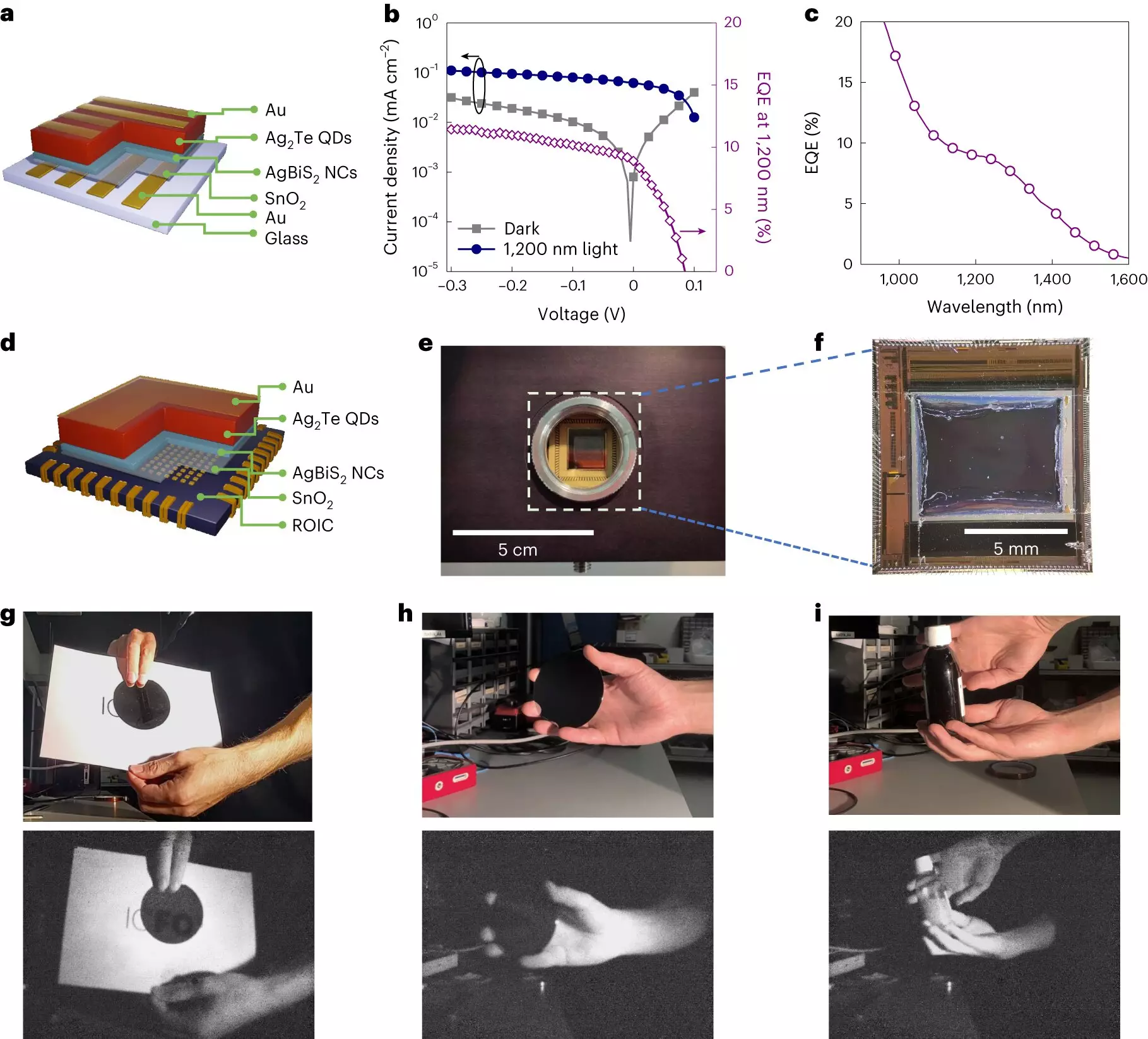In the world of high-volume, computer vision first applications, such as service robotics, automotive, and consumer electronics, the use of shortwave infrared (SWIR) light can offer unparalleled reliability, function, and performance. SWIR image sensors are capable of operating under adverse conditions like bright sunlight, fog, haze, and smoke, making them highly desirable in a range of industries. However, the integration of SWIR-sensitive quantum dots into mass-market applications has been a challenge, primarily due to the presence of heavy metals like lead and mercury. These metals are subject to strict regulations, such as the European directive Restriction of Hazardous Substances (RoHS), which limits their use in consumer electronic applications.
Researchers at ICFO, led by ICREA Prof. Gerasimos Konstantatos, have made significant strides in developing high-performance infrared photodetectors and SWIR image sensors based on non-toxic colloidal quantum dots. Their groundbreaking study, published in Nature Photonics, describes a new method for synthesizing size-tunable, phosphine-free silver telluride (Ag2Te) quantum dots. These quantum dots exhibited remarkable performance, with distinct excitonic peaks over 1,500nm, surpassing previous techniques that relied on phosphine-based fabrication methods.
The synthesis of phosphine-free quantum dots presented its own set of challenges. The researchers had to overcome the fundamental hurdle of reverting the device setup from bottom illumination, as used in lab-scale devices, to top illumination, which is necessary for CMOS integrated quantum dot stacks. This adjustment proved to be a daunting task, but once resolved, it paved the way for further advancements. Initially, the photodiode exhibited low performance in sensing SWIR light. However, a redesign that incorporated a buffer layer significantly enhanced the photodetector’s performance. The resulting SWIR photodiode demonstrated a spectral range from 350nm to 1,600nm, a linear dynamic range exceeding 118 dB, a -3dB bandwidth surpassing 110 kHz, and a room temperature detectivity of the order 1012 Jones.
With the success of the heavy-metal-free quantum dot-based photodetector, the researchers partnered with Qurv, an ICFO spin-off, to demonstrate the potential of SWIR image sensors. They integrated the new photodiode with a CMOS-based read-out integrated circuit (ROIC) focal plane array (FPA), creating a non-toxic, room temperature-operating SWIR quantum dot-based image sensor. The team tested the imager by taking several pictures of different objects, including the transmission of silicon wafers under SWIR light and the visualization of the content of opaque plastic bottles. This breakthrough has significant implications for consumer electronics, particularly in improving vision systems for the automotive industry and enabling long-range light detection and ranging (LiDAR), three-dimensional imaging, and augmented reality applications.
The researchers are committed to further enhancing the performance of the photodetectors by engineering the stack of layers that comprise the device. They also intend to explore new surface chemistries for the silver telluride quantum dots to improve their performance, thermal stability, and environmental resistance. By continuously pushing the boundaries of colloidal quantum dot technology, they aim to bring SWIR image sensors to the mass market, unlocking their full potential in a wide array of applications.
The development of non-toxic colloidal quantum dots has revolutionized SWIR image sensors, enabling their integration into high-volume markets. The breakthrough synthesis method for phosphine-free silver telluride quantum dots has overcome the limitations posed by heavy metals, leading to the creation of high-performance photodetectors and SWIR image sensors. With ongoing research and advancements, the potential of SWIR technology is boundless, from enhanced vision systems to augmented reality applications. As the researchers continue to improve the performance and stability of quantum dot technology, the market can expect to see a new era of SWIR image sensors that will shape the future of computer vision.


Leave a Reply